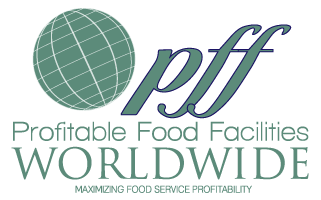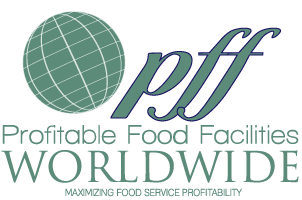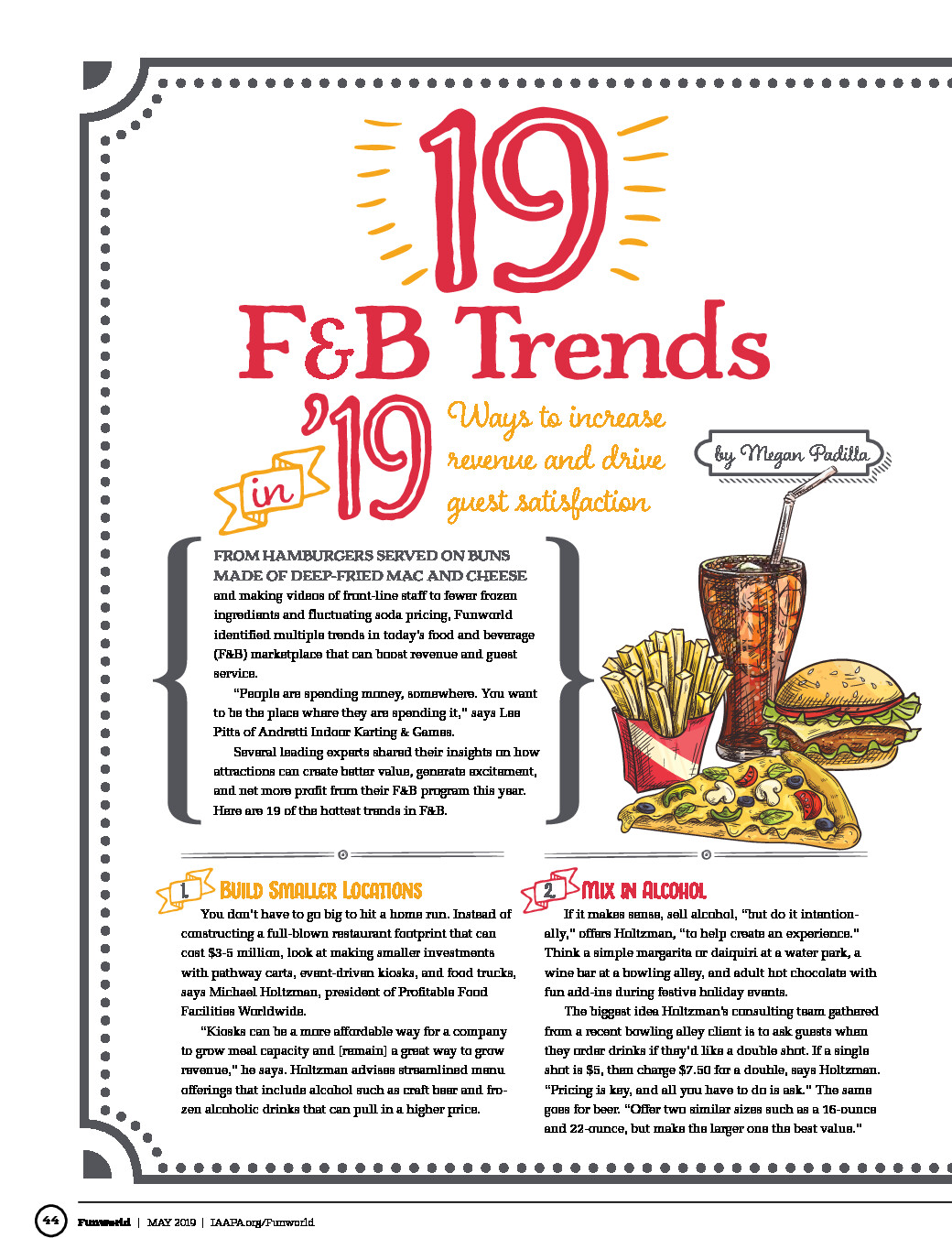FROM HAMBURGERS SERVED ON BUNS MADE OF DEEP-FRIED MAC AND CHEESE and making videos of front-line staff to fewer frozen ingredients and fluctuating soda pricing, Funworld identified multiple trends in today’s food and beverage (F&B) marketplace that can boost revenue and guest service.
“People are spending money, somewhere. You want to be the place where they are spending it,” says Lee Pitts of Andretti Indoor Karting & Games.
Several leading experts shared their insights on how attractions can create better value, generate excitement, and net more profit from their F&B program this year. Here are 19 of the hottest trends in F&B
1. Build Smaller Locations
You don’t have to go big to hit a home run. Instead of constructing a full-blown restaurant footprint that can cost $3-5 million, look at making smaller investments with pathway carts, event-driven kiosks, and food trucks, says Michael Holtzman, president of Profitable Food Facilities Worldwide.
“Kiosks can be a more affordable way for a company to grow meal capacity and [remain] a great way to grow revenue,” he says. Holtzman advises streamlined menu offerings that include alcohol such as craft beer and fro- zen alcoholic drinks that can pull in a higher price.
2. Mix in Alcohol
If it makes sense, sell alcohol, “but do it intention- ally,” offers Holtzman, “to help create an experience.” Think a simple margarita or daiquiri at a water park, a wine bar at a bowling alley, and adult hot chocolate with fun add-ins during festive holiday events.
The biggest idea Holtzman’s consulting team gathered from a recent bowling alley client is to ask guests when they order drinks if they’d like a double shot. If a single shot is $5, then charge $7.50 for a double, says Holtzman. “Pricing is key, and all you have to do is ask.” The same goes for beer. “Offer two similar sizes such as a 16-ounce and 22-ounce, but make the larger one the best value.”
3. Sell Branded Food
In some cases, says Albert Cabuco, vice president of F&B at Palace Entertainment, branded concepts such as Auntie Anne’s pretzels, Pink’s Hot Dogs, or Johnny Rockets can double—even triple—sales in certain parks. “Anywhere we put a Dunkin’ Donuts, we sell like crazy,” he adds. Cabuco cautions that just because “branding units are the name of the game,” it’s impor- tant to match the demographics of the area.
Last year, Universal Orlando Resort opened Voodoo Doughnut, the “delightfully weird and sinfully deli- cious doughnuts” (whose flagship location is an iconic Portland, Oregon, food stop) at Universal CityWalk. “The guest response has been amazing,” says a Universal spokesperson. “You now see the iconic pink Voodoo Doughnut boxes in the hands of our guests all across the destination.” The venue recently sold its 2 millionth doughnut.
4. Tweak Existing Products
No, not every single product, just the top 10, sug- gests Holtzman, who says that for most operations, the top 10 items will make up at least 60 percent of sales. “Focus on making those the best and spend less time on the rest,” says Holtzman. “Take your time with these,” he says. “Look at the quality of each item. Where is it coming from? Does it sound good? Would you want to eat it?” And of course, how much does it cost?


